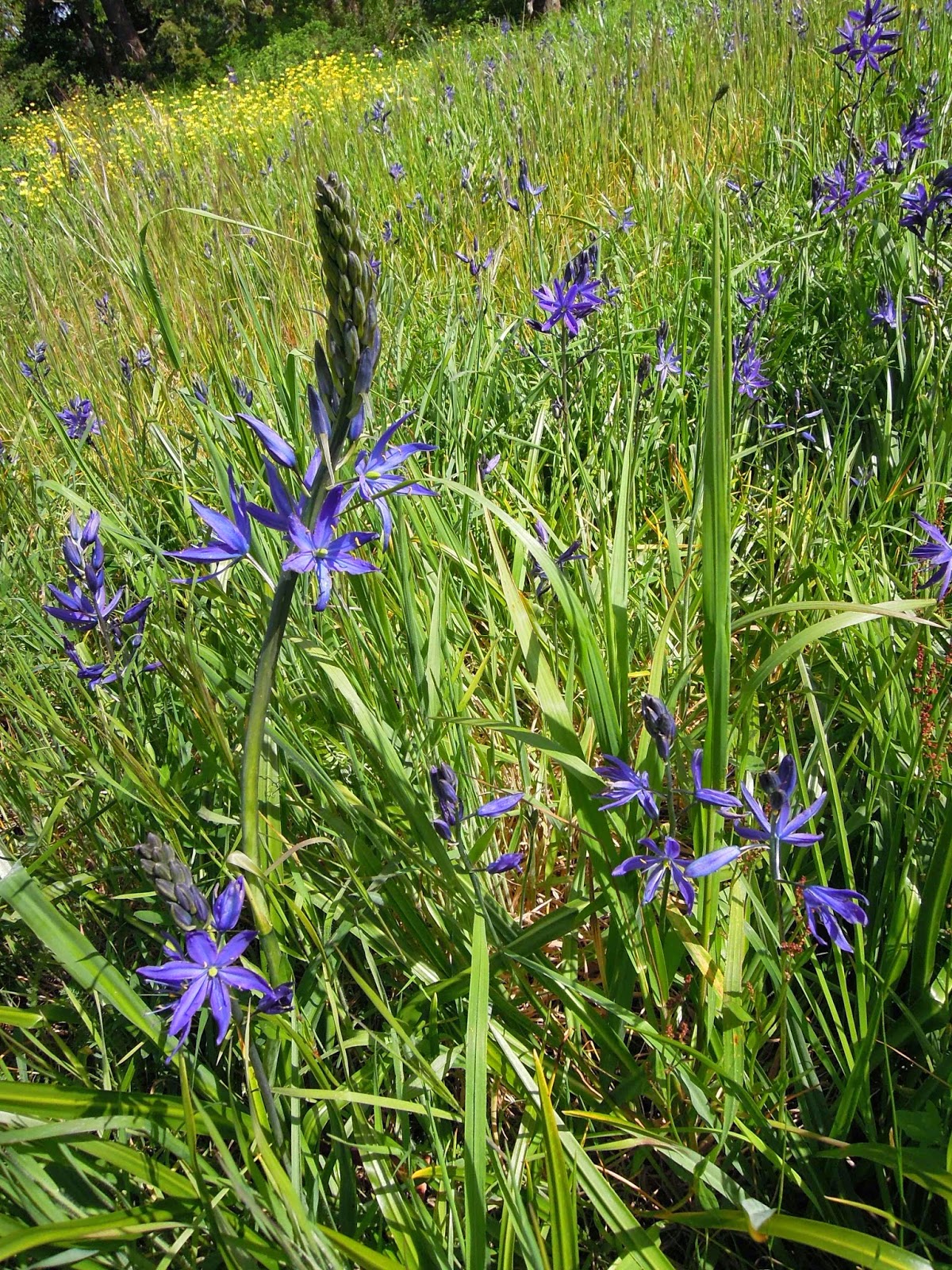 |
Camas (Camassia quamash) This photo was taken on Yellow Island, San Juan Archipelago, WA. A nature preserve. |
Common name: Camas
Life cycle: Hardy Bulb.
Growing region: Zones 4 to 9.
Height: 12-24 inches.
Flowers: Late spring.
Bloom Description: blue-violet (rarely white.) Showy; April-June.
Habitat: moist soils, at least in early spring, prairies; meadows; grassy flats. Occurs on both sides of the Cascades.
Tolerates: Summer drought.
Notes:
Camassia species deserve wider use in perennial gardens or for naturalizing in woodland settings. They are used more extensively in Europe than in the USA, where they are native. These long-lived bulbs are easy to establish.
The bulbs were an important food for Native Americans, and territorial battles were fought over quamash fields. The Lewis and Clark expedition also depended on boiled bulbs for food during their journey west.
There are six species of Camassia native to N. America. There are two species native to the San Juans.
June 1806 Meriwether Lewis came down into the Nisqually prairie and said these famous words:
"The quamash is now in blume and from the colour of its bloom at a short distance it resembles lakes of fine clear water, so completely in this deception that on first sight I could have sworn that it was water!"
One of my favourite reference books for researching this specimen, partly because the author took space to include the well-known Lewis quote, in her fine book:
 |
A Christmas 2014 gift book from dear friends. Only available from within Northwest Indian communities Published by The Northwest Indian College Vanessa Cooper-360-392-4343. |
 |
Camassia quamash seed packet Available at the Shaw Island Gatehouse seed shed Reefnet Bay Road, Shaw Island, WA. |



No comments:
Post a Comment